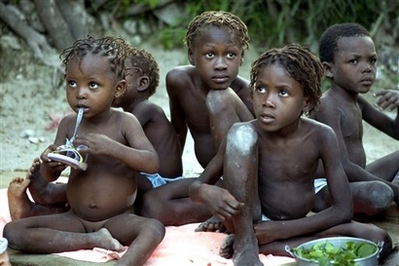
| Want to send this page or a link to a friend? Click on mail at the top of this window. |
More Special Reports |
| Posted July 21, 2008 |
As Haiti Food Aid Lags, Hunger, With Irreversible Multiplying Effect, Deepens
| By JONATHAN M. KATZ, |
| Associated Press Writer |
 |
| Malnourished children sit outside their homes in Deschapelles, Haiti, Tuesday, June 17, 2008. Funding delays, a dysfunctional central government and transportation problems along crumbling rural roads are keeping aid from reaching critical areas such as the fertile Artibonite Valley, where one out of three children are malnourished.(AP Photo/Ariana Cubillos) More Images |
| Wehaitians.com, the scholarly journal of democracy and human rights |
| More from wehaitians.com |